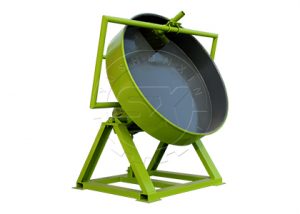When planning to invest in a fertilizer production factory, one of the first decisions is choosing between organic and compound fertilizer production lines. Both options have unique features, market demands, and budget requirements—but which one requires a higher setup cost?
Raw Material Availability and Cost
Organic fertilizer factories use natural materials such as chicken manure, cow dung, compost, and agricultural waste. These materials are often cheap or even free, especially if sourced locally. On the other hand, compound fertilizer plants rely on chemical inputs like urea, ammonium phosphate, and potassium chloride, which are usually purchased in bulk and subject to market price fluctuations. Therefore, raw material sourcing for compound fertilizer production tends to be more expensive.
Processing Equipment and Line Complexity
An organic fertilizer production line typically includes a compost turner, crusher, mixer, granulator, dryer, and screening machine. The equipment is relatively low-tech, and some small-scale plants can even operate manually or semi-automatically. This makes the initial budget for organic fertilizer factories establishing more affordable.
In contrast, compound fertilizer making lines require more precise formulation and automated control systems to ensure the correct NPK ratio. A standard setup may involve batching systems, high-speed mixers, rotary drum granulators, dryers, coolers, and coating machines. The machines are more complex and costly, which increases the total investment for compound fertilizer production plant setup.
Environmental Compliance and Waste Treatment
Organic fertilizer factories often benefit from government incentives for promoting recycling and sustainable agriculture. However, they also need to manage odor control and comply with bio-safety regulations, which may add some environmental control costs.
Compound fertilizer factories, dealing with chemicals, must install pollution control equipment, such as dust collectors and waste gas treatment systems, to meet environmental standards. These systems increase both installation and maintenance costs significantly.
Estimated Investment Ranges
In general, the estimated investment ranges of a fertilizer manufacturing plant is:
Organic Fertilizer Plant: $30,000 – $300,000 for a small to medium plant
Compound Fertilizer Plant: $100,000 – $500,000+ depending on capacity and automation
Conclusion
In general, compound fertilizer production requires a higher initial investment due to complex machinery, stricter regulations, and chemical raw material costs. If you’re working with a limited budget or aiming for an eco-friendly business, an organic fertilizer production line offers a more cost-effective and scalable starting point. If you need a precise quote, you can visit https://fertilizerequipmentmanufacturer.com/fertilizer-manufacturing-plant-cost/
Invest wisely by evaluating your raw material access, target market, and available capital before finalizing your fertilizer plant setup plan.













